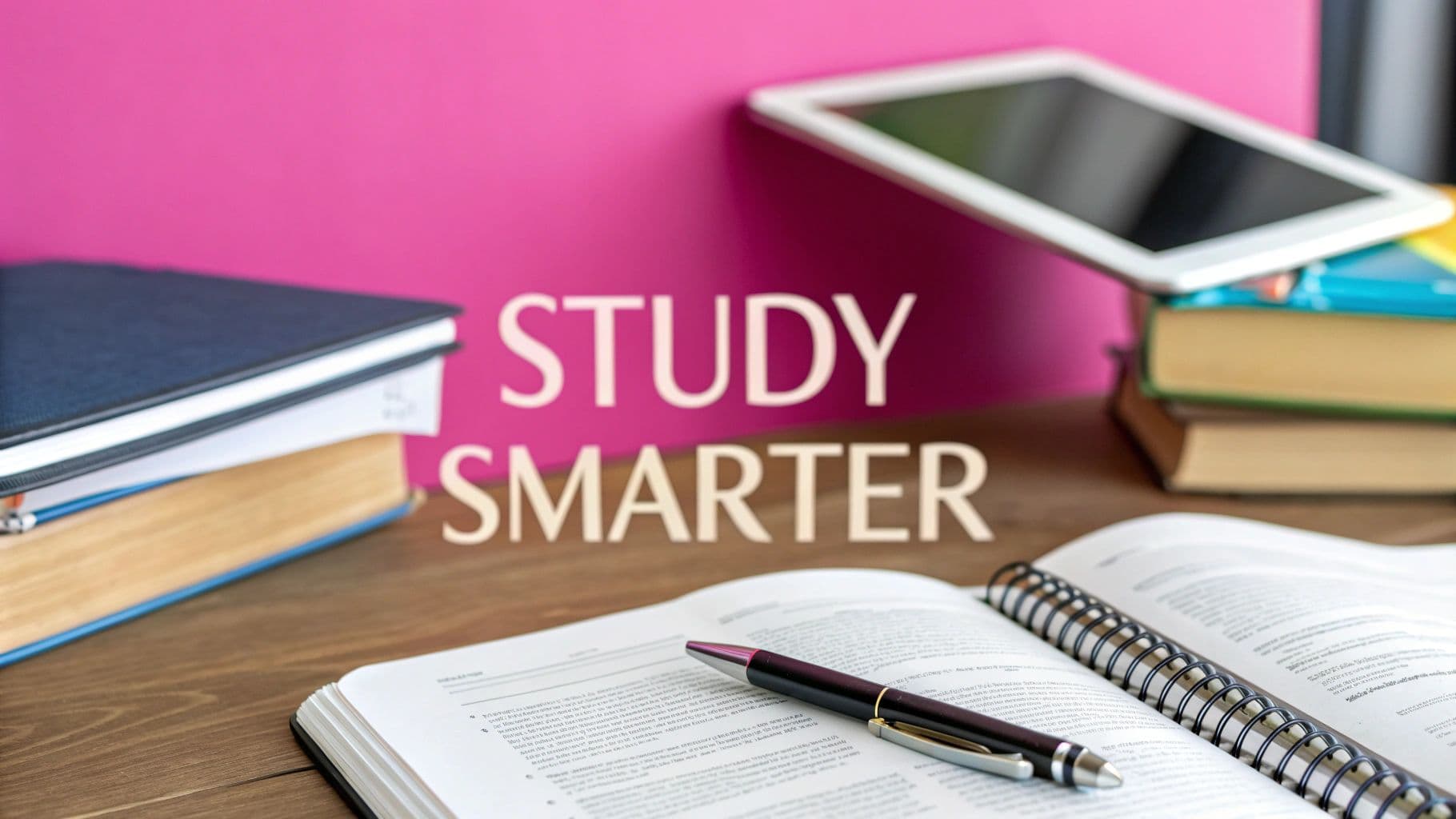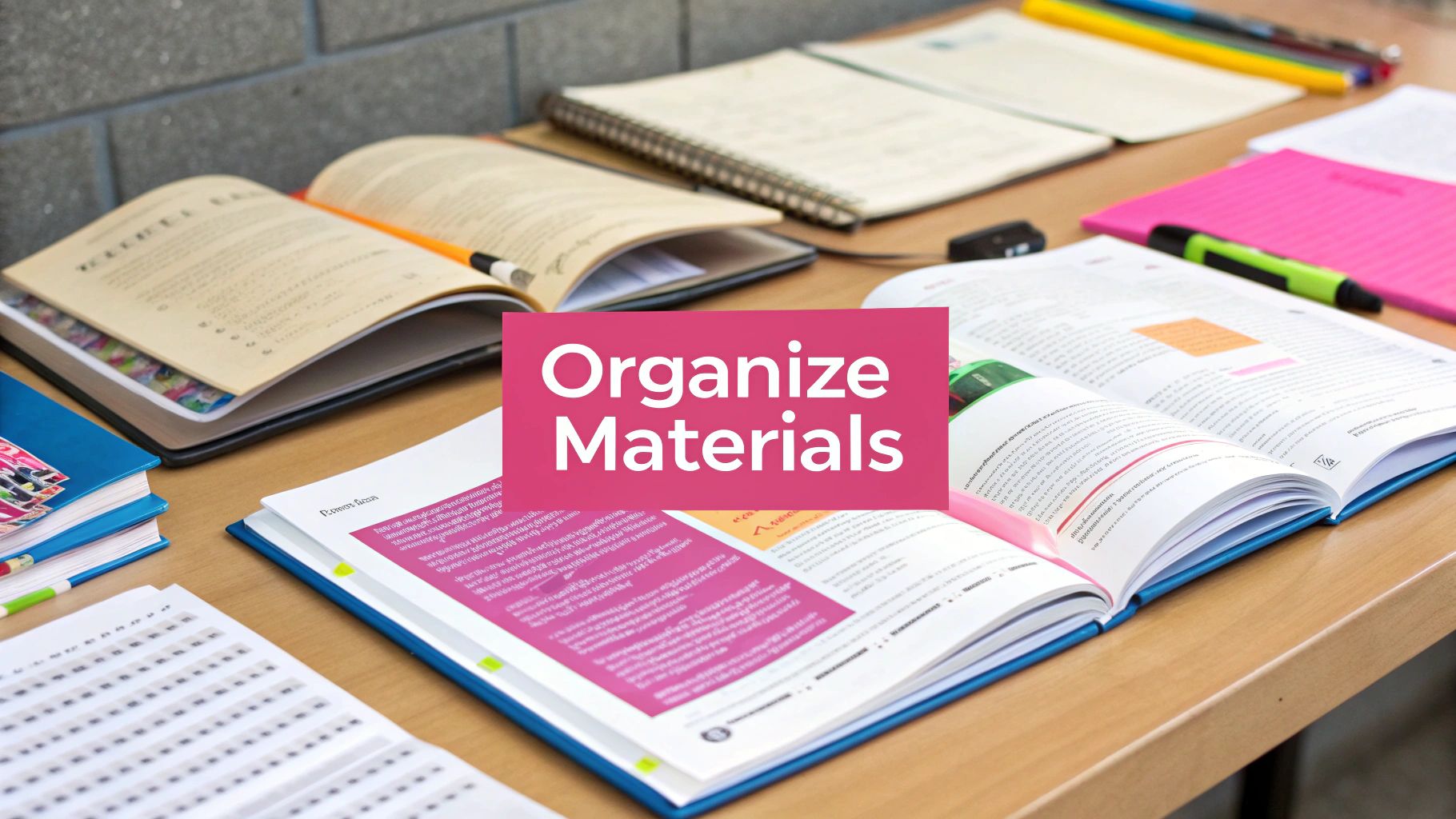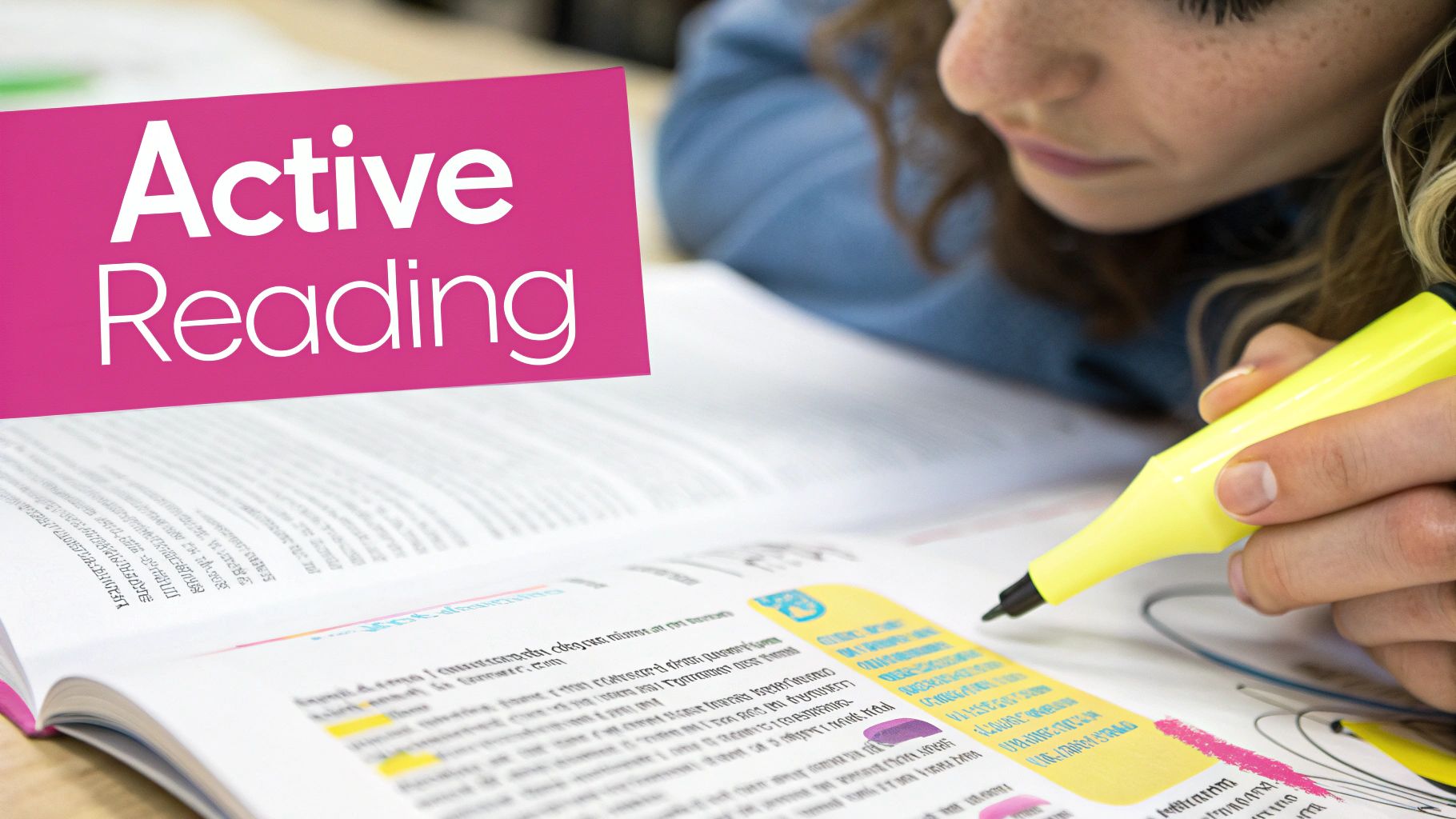
How to Read Textbooks Effectively: The Action-Based Guide to Academic Excellence
Breaking Free from Passive Reading Habits

Reading textbooks effectively is a skill that many students struggle to master. Too often, students fall into one of two extremes – either reading every word methodically without processing the meaning, or quickly skimming without absorbing the content. Both approaches lead to poor understanding and retention. The key is shifting from passive reading to actively engaging with the material.
The Pitfalls of Passive Reading
Think of passive reading like watching a movie while distracted – you might see the scenes playing out, but you miss the deeper meaning and connections. When students passively read textbooks, their eyes move across the page but their minds don't fully process the information. A biology student might memorize cell structures but struggle to understand how they work together as a system. This surface-level comprehension makes it difficult to apply concepts or think critically about the material.
Embracing Active Reading Techniques
Active reading means purposefully interacting with the text as you read. The SQ3R method (Survey, Question, Read, Recite, Review) provides a practical framework for this approach. Before diving into a chapter, survey the headings and main points to get an overview. Next, form specific questions you want the reading to answer. As you read, search for those answers while taking notes. After each section, explain the key ideas in your own words. Finally, review regularly to solidify your understanding over time.
Implementing SQ3R for Textbook Success
The SQ3R method brings structure to textbook reading. For example, when studying the French Revolution, start by scanning chapter headings to identify major figures and events. Generate questions like "What caused the revolution?" and "How did Napoleon rise to power?" While reading, actively seek out answers to these questions. Put the information in your own words to check your understanding. Regular review sessions help move this knowledge into long-term memory.
Beyond SQ3R: Additional Active Reading Strategies
While SQ3R provides an excellent foundation, you can enhance your learning with additional techniques. Write notes in the margins to capture your thoughts and questions. Create visual mind maps to show relationships between concepts. Write brief summaries after completing each section. These strategies transform you from a passive reader into an active learner who deeply processes and remembers the material. Making this shift takes practice but leads to better academic results and more efficient studying.
Engineering Your Perfect Study Environment
A well-designed study space is essential for effective textbook reading and learning. Just like a chef needs proper kitchen setup, you need an environment that helps you concentrate and retain information. Let's explore how to create a study sanctuary that works with your natural learning style.

The Power of Place: Optimizing Your Study Zone
Consider where you feel most focused and productive. For some, it's the calm atmosphere of a library. Others thrive on the gentle buzz of a coffee shop or find comfort in their bedroom. While the ideal study spot varies by person, research shows certain factors consistently improve learning. Good lighting reduces eye strain so you can read longer without fatigue. A comfortable room temperature helps prevent distracting physical discomfort. Simple changes like adding a quality desk lamp and ensuring good air circulation can significantly boost your study sessions.
Minimizing Distractions: Taming the Digital Beast
Phone notifications, social media, and endless online content compete for our attention when studying. Research clearly shows that trying to multitask actually reduces our ability to learn and remember information. To manage digital distractions while still using helpful study tools, try using website blockers or app timers during focused reading sessions. This helps you concentrate on textbook material without constantly fighting the urge to check your phone.
Creating a Ritual: The Psychology of Habit
Students who excel often develop specific routines around studying. A pre-study ritual – like brewing tea or playing instrumental music – signals to your brain that it's time to focus. For example, lighting the same candle before each study session creates a mental link between that scent and concentrated learning. This means your pre-study habits are just as important as your physical study space. By consistently using a dedicated learning area and following your routine, you train your mind to shift into study mode automatically. This makes textbook reading feel more natural and manageable over time. Your brain learns to associate your study spot with focused learning, helping you absorb information more effectively as soon as you sit down.
Mastering Time Without Losing Your Mind

Even with an excellent study space and strong reading skills, students often struggle to manage their time effectively when working through textbooks. Good time management is just as important as understanding the material itself. Here are practical strategies to help you tackle your reading assignments while maintaining both comprehension and peace of mind.
Breaking Down Dense Texts: The Power of Chunking
Many students try to read entire chapters at once, which can overwhelm your brain and reduce how much you actually retain. A better approach is to break chapters into smaller, digestible sections – similar to eating a large meal one bite at a time. For a 40-page chapter, try reading four 10-page sections with breaks in between. Your brain will process the information more effectively this way. When dealing with complex topics, you may need even smaller chunks to fully grasp the concepts.
Timing Your Study Sessions: The Pomodoro Technique and Beyond
The Pomodoro Technique uses 25-minute focused study periods followed by short breaks. While this method works well for many students, you'll need to find your own optimal study length. Some students focus best in 45-minute blocks, while others prefer 15-minute sprints. The key is maintaining concentration during your chosen timeframe and then taking a real break away from your books. This pattern helps prevent burnout and improves how well you remember what you read.
Maintaining Consistency: Creating a Sustainable Reading Schedule
To succeed long-term, you need a realistic reading schedule you can stick with. Start by looking at your overall workload and setting aside specific times for textbook reading. Treat these like important appointments – for example, Monday and Wednesday evenings from 7:00 PM to 8:30 PM for certain chapters. Following a consistent schedule helps build good study habits. Remember to stay flexible though – life happens, and missing one session isn't the end of the world. Just adjust your plan and keep moving forward.
Real-World Examples: Time Blocking and Workload Management
Consider how a pre-med student handles two dense anatomy chapters: They block out two one-hour slots on Tuesday and Thursday to read 20 pages per session, plus shorter review periods on Wednesday and Friday to reinforce the material. This breaks a challenging task into manageable pieces. Or take a history student studying the French Revolution – they use Pomodoro sessions of 25 minutes reading followed by 5-minute breaks. With focused study periods and consistent scheduling, students can effectively tackle even difficult reading assignments while maintaining both their learning and their wellbeing.
Advanced Comprehension Strategies That Actually Work

Reading textbooks effectively requires going beyond basic techniques. The strategies in this section help you deeply understand and remember what you read, so you can actually use the information later rather than just getting through the chapter.
Conceptual Mapping: Connecting the Dots
Think of conceptual mapping as creating a visual roadmap of ideas in your textbook. This technique reveals how different concepts link together and support each other. For instance, when studying the circulatory system, you might draw connections between the heart, blood vessels, and how oxygen moves through the body. As you sketch out these relationships, you start to see both the big picture and important details. Rather than memorizing isolated facts, you build an organized network of knowledge that sticks with you.
Strategic Annotation: Marking With Purpose
Good annotation means having a clear system for marking your textbook. Instead of highlighting everything, use different colors to identify specific elements – perhaps yellow for key terms, blue for main ideas, and green for examples. Write brief notes in the margins to summarize points or jot down questions. When studying the French Revolution, for example, you could mark key figures, major events, and underlying causes in different colors. This organized approach makes review easier and keeps you engaged with the material as you read.
Active Recall: Testing Your Knowledge
One of the most powerful study methods is active recall – trying to remember information without looking at your notes. This forces your brain to reconstruct what you've learned, which strengthens your memory. Try explaining concepts out loud without referring to the text, or make flashcards with questions on one side and answers on the other. After reading about World War I's causes, see how many you can list from memory before checking your notes. This process shows you which areas need more work and reinforces what you already know well. By practicing active recall, you train yourself to retrieve information just like you'll need to do on exams.
Integrating These Strategies: A Powerful Combination
These methods work together to help you truly learn the material. Conceptual mapping gives you the big picture framework, strategic annotation helps organize the details, and active recall strengthens your ability to remember it all. Using these techniques together transforms reading from a passive activity into an active process of building understanding. With consistent practice, you'll develop better comprehension skills and set yourself up for academic success. The key is applying these strategies regularly as you work through your textbooks.
Using Digital Tools Without Getting Distracted
Students today have never known a world without technology. While constant digital access can make focusing harder, it also opens up exciting new ways to engage with textbook material effectively. The key is using digital tools with intention and purpose to support your learning goals.
Selecting Digital Tools That Actually Help
Instead of getting overwhelmed by endless app options, focus on tools that solve specific challenges in your textbook reading process. Some essential categories to consider:
- Note-Taking Apps: Evernote, OneNote, and Notability help organize notes, create flashcards, and record audio synced to text.
- Study Platforms: Quizlet and Anki enable active recall practice through interactive study materials.
- Organization Tools: Trello and Asana break down reading assignments into manageable chunks and track progress.
- Text-to-Speech Software: For auditory learning or accessibility needs, text-to-speech makes content more engaging.
For example, Notescast helps visual learners by turning study materials into engaging video content. This makes complex academic texts easier to understand and remember.
Setting Clear Digital Boundaries
Digital tools are only helpful when used with focus. To avoid common distractions:
- Block Off Study Time: Schedule dedicated textbook reading periods and stick to them like important meetings.
- Use Website Blockers: Apps like Freedom and Cold Turkey prevent access to distracting sites during study sessions.
- Silence Notifications: Turn off all non-essential phone and computer alerts to stay focused.
- Create a Focused Space: Find a quiet study spot where you can concentrate without constant interruptions.
Building an Effective Digital Study System
The best approach combines different tools into a complete study workflow. Here's how to make it work:
- Start by taking detailed notes on key chapter concepts in your preferred note-taking app. Then convert those notes into practice materials using a study platform for active recall.
- Use task management tools to divide reading assignments into smaller, achievable goals. This helps track progress through dense textbook material.
- For tough concepts, find supporting videos or interactive simulations online. Different perspectives often help clarify difficult ideas.
When chosen carefully and used purposefully, digital tools can dramatically improve how you read and retain textbook material. The goal is to use technology in ways that actively support your learning without becoming a distraction. Remember – these are tools to help you succeed, not replacements for focused study.
Measuring Progress and Adapting Your Approach
Learning to read textbooks effectively requires ongoing assessment and refinement of your methods. Think of it like athletic training – you need to regularly evaluate what's working and adjust your techniques to get better results. By measuring your progress and adapting accordingly, you can develop study habits that truly work for you.
Tracking Comprehension: Beyond Just Finishing the Chapter
Simply reading through a chapter doesn't mean you've truly understood it. Real comprehension comes from engaging deeply with the material and being able to explain concepts in your own words. After reading a section, try testing yourself by summarizing the main points without looking back at the text. For instance, if you're studying the American Civil War, explain the major causes and battles from memory. This simple exercise reveals which topics you grasp well and which need more review. When you identify these gaps early, you can focus your study time more effectively.
Measuring Retention: The Importance of Spaced Repetition
While cramming might help you pass tomorrow's quiz, it won't help you remember information long-term. Spaced repetition – reviewing material at gradually increasing intervals – is proven to boost long-term retention. For example, when learning vocabulary for a foreign language class, review words initially, then again in a few days, and once more the following week. This repeated exposure strengthens memory pathways in your brain, making recall easier over time.
Adapting Your Strategies: A Personalized Approach
Just as different athletes excel at different sports, different students thrive with different study methods. The key is discovering what techniques match your learning style through experimentation. You might find the Pomodoro Technique keeps you focused, or perhaps longer study blocks work better. If dense scientific texts leave you confused, try drawing diagrams or watching educational videos to grasp concepts visually. For dry historical content, reading aloud or listening to audiobooks could help you stay engaged. Keep testing new approaches until you find your ideal study system.
Building a Feedback Loop: Continuous Improvement
Think of improving your textbook reading like training for a marathon – you start small and gradually build up your capabilities based on how your body responds. Regular self-assessment helps you identify where you're making progress and what needs work. Test your understanding frequently, reflect on which methods help you learn best, and refine your approach over time. This creates an ongoing cycle of evaluation and adjustment that helps you become a more effective learner. Making study strategy adjustments based on concrete results, rather than just following a rigid system, leads to better outcomes.
Want to transform your notes and study materials into engaging video content that boosts retention and accelerates learning? Check out Notescast: https://notescast.app/
